Enjoying the content on 3QD? Help keep us going by donating now.
Category: Recommended Reading
John Berryman on the Three Demons of Creative Work
Maria Popova at Marginalia:
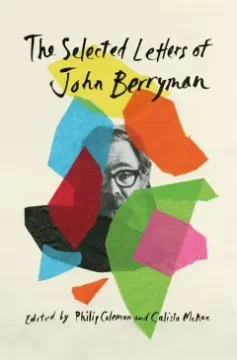 Early one morning in the pit of his fifty-eighth winter — having won a Pulitzer Prize, a National Book Award, and a $10,000 grant from the newly founded National Endowment for the Arts, having dined with the President at the White House, having nurtured the dreams of a generation of poets as a teacher and mentor and unabashed lavisher with praise, and having finally quit drinking — John Berryman jumped from the Washington Avenue Bridge in Minneapolis to his death, slain by the meaning confluence of biochemistry and trauma that can leave even the strongest of minds “so undone.”
Early one morning in the pit of his fifty-eighth winter — having won a Pulitzer Prize, a National Book Award, and a $10,000 grant from the newly founded National Endowment for the Arts, having dined with the President at the White House, having nurtured the dreams of a generation of poets as a teacher and mentor and unabashed lavisher with praise, and having finally quit drinking — John Berryman jumped from the Washington Avenue Bridge in Minneapolis to his death, slain by the meaning confluence of biochemistry and trauma that can leave even the strongest of minds “so undone.”
Several months earlier, Berryman had written a long letter to his former teacher Mark Van Doren, who had emboldened him to make a life in poetry and who would lovingly remember him as “an overflowing man, a man who was never self-contained, a man who would have been multitudes had there been time and world enough for such a miracle.” Despite reporting a routine of astonishing vitality — studying theology before breakfast, keeping up “a fancy exercise-programme” in the afternoon, reading a canon of medical lectures as research for a novel he was writing, responding to a dozen letters a day, and “and supporting with vivacity & plus-strokes & money various people, various causes” — Berryman placed at the center of the letter a self-flagellating lament about his “lifelong failure to finish anything,” which he attributed to his twenty four years of alcoholism.
more here.
Enjoying the content on 3QD? Help keep us going by donating now.
How Bauhaus Became the House We Live In
Eric Paul Mumford in The Common Reader:
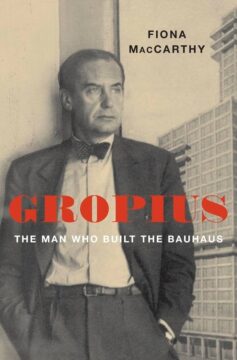 This is a highly readable biography of the Berlin architect who founded the Bauhaus in Germany in the 1920s, by a British design historian. The Bauhaus was arguably the most significant innovation in design education since the Renaissance, as it replaced the then-standard imitation of classical and other historical forms in architecture with the now universal idea that design should be based on function and the economical provision of everyday needs. Although often considered dangerously radical in Germany in the 1920s, after World War II, Bauhaus design approaches spread widely, until they again began to be questioned by postmodernists in the 1970s. By the 1980s, architectural tastes had begun to shift toward an expensive neo-traditionalism. This biography does not address the low opinion many had of Gropius in that era, and it probably will not change some widespread perceptions of Gropius and modern architecture that have taken hold since his death in 1969. It does offer a readable and largely sympathetic account of the complicated personal history of this centrally important modern design educator and mentor.
This is a highly readable biography of the Berlin architect who founded the Bauhaus in Germany in the 1920s, by a British design historian. The Bauhaus was arguably the most significant innovation in design education since the Renaissance, as it replaced the then-standard imitation of classical and other historical forms in architecture with the now universal idea that design should be based on function and the economical provision of everyday needs. Although often considered dangerously radical in Germany in the 1920s, after World War II, Bauhaus design approaches spread widely, until they again began to be questioned by postmodernists in the 1970s. By the 1980s, architectural tastes had begun to shift toward an expensive neo-traditionalism. This biography does not address the low opinion many had of Gropius in that era, and it probably will not change some widespread perceptions of Gropius and modern architecture that have taken hold since his death in 1969. It does offer a readable and largely sympathetic account of the complicated personal history of this centrally important modern design educator and mentor.
More here.
Enjoying the content on 3QD? Help keep us going by donating now.
The Story Of Funk
Enjoying the content on 3QD? Help keep us going by donating now.
The Exploration Of Sly Stone’s Genius
Tracey Thorn at The New Statesman:
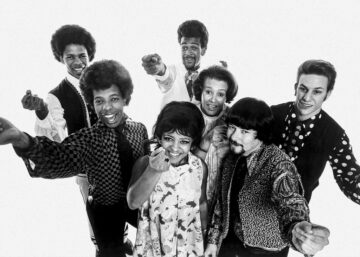 Sly and the Family Stone achieved unprecedented success in the late Sixties, with number one records, a star turn at Woodstock, a cover on Rolling Stone magazine. Sly was not just a musical genius but a progressive mastermind, insisting that the band be multi-racial and made up of both men and women. Everything about them embodied the notion of inclusivity, of reaching towards a better world in which – without wanting to sound too blandly idealistic – all people could get along together. In a song like “Everyday People”, he made the impossible sound easy.
Sly and the Family Stone achieved unprecedented success in the late Sixties, with number one records, a star turn at Woodstock, a cover on Rolling Stone magazine. Sly was not just a musical genius but a progressive mastermind, insisting that the band be multi-racial and made up of both men and women. Everything about them embodied the notion of inclusivity, of reaching towards a better world in which – without wanting to sound too blandly idealistic – all people could get along together. In a song like “Everyday People”, he made the impossible sound easy.
Perhaps overwhelmed by his own success, and threatened by the demands it placed on him, from the Seventies onwards he spiralled downwards into such heavy drug usage and unreliable behaviour that his work, and the very existence of the band, was undermined. The film paints an unflinching portrait of how this happened.
More here.
Enjoying the content on 3QD? Help keep us going by donating now.
We should be living in the golden age of hobbies. What happened?
Jenny Singer in The Washington Post:
Enjoying the content on 3QD? Help keep us going by donating now.
Severance versus Science: The Neuroscience of Split-Brain Syndrome
Hannah Thomasy in The Scientist:
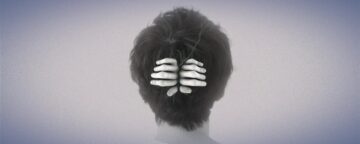 If the world of Severance was real, your “innie” would be reading this article at work, oblivious to the fact that your “outie” intends to spend the evening scouring the internet for these very answers. While the Severance procedure—surgical implantation of a chip into the brain to create separate conscious agents with access to separate streams of memory and experience—is purely fictional at present, another brain-splitting surgical procedure, called a corpus callosotomy, is entirely real and has been in use since the 1940s. Instead of separating work life and personal life, this procedure separates the right and left hemispheres of the brain by severing the major line of communication between them, a thick bundle of nerves called the corpus callosum.1 This surgery was used to treat severe and refractory epilepsy; in many patients, it helped control seizures by preventing aberrant neural activity from spreading between the hemispheres.
If the world of Severance was real, your “innie” would be reading this article at work, oblivious to the fact that your “outie” intends to spend the evening scouring the internet for these very answers. While the Severance procedure—surgical implantation of a chip into the brain to create separate conscious agents with access to separate streams of memory and experience—is purely fictional at present, another brain-splitting surgical procedure, called a corpus callosotomy, is entirely real and has been in use since the 1940s. Instead of separating work life and personal life, this procedure separates the right and left hemispheres of the brain by severing the major line of communication between them, a thick bundle of nerves called the corpus callosum.1 This surgery was used to treat severe and refractory epilepsy; in many patients, it helped control seizures by preventing aberrant neural activity from spreading between the hemispheres.
More here.
Enjoying the content on 3QD? Help keep us going by donating now.
Thursday, March 20, 2025
Marco Roth: Lisbon Dispatch
Marco Roth at The Feckless Bellelettrist:
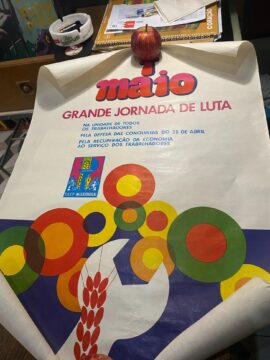 I had been on my way out for a smoke, and had stopped to hold the heavy bronzed steel and glass door for a woman whose long gray ponytail and colorful mismatched knitwear looked pleasingly hippie-ish.
I had been on my way out for a smoke, and had stopped to hold the heavy bronzed steel and glass door for a woman whose long gray ponytail and colorful mismatched knitwear looked pleasingly hippie-ish.
Our third was a construction engineer from the ongoing renovations next to the entrance: reflective safety vest, button down plaid shirt, muddy work boots. The woman popped open a large purple umbrella, looked at me, and patted it. She was offering to share.
I explained that I was just there to smoke and return to the library. We wished each other good afternoon. Next, she invited the foreman. He was only on his way to get a coffee and check on his crew, he said, but he accepted, put away the phone, then said something that made her laugh. They linked arms and set off up over the slick mossy brick path like lovers.
I tried remembering the last time I’d seen such a spontaneous act of random generosity—also accompanied by playful good humor—between two people from such different walks of life, strangers to each other. This kind of solidarity—even against the relatively mild elements—would be unimaginable now in my former city, at, say, the crowded side entrance to the New York Public Library on 42nd street, or at a Brooklyn subway station.
Cities have energies and those energies can change, curdle, or waste away.
More here.
Enjoying the content on 3QD? Help keep us going by donating now.
Digital Therapists Get Stressed Too, Study Finds
Alexander Nazaryan in the New York Times:
 Even chatbots get the blues. According to a new study, OpenAI’s artificial intelligence tool ChatGPT shows signs of anxiety when its users share “traumatic narratives” about crime, war or car accidents. And when chatbots get stressed out, they are less likely to be useful in therapeutic settings with people.
Even chatbots get the blues. According to a new study, OpenAI’s artificial intelligence tool ChatGPT shows signs of anxiety when its users share “traumatic narratives” about crime, war or car accidents. And when chatbots get stressed out, they are less likely to be useful in therapeutic settings with people.
The bot’s anxiety levels can be brought down, however, with the same mindfulness exercises that have been shown to work on humans.
Increasingly, people are trying chatbots for talk therapy. The researchers said the trend is bound to accelerate, with flesh-and-blood therapists in high demand but short supply. As the chatbots become more popular, they argued, they should be built with enough resilience to deal with difficult emotional situations.
More here.
Enjoying the content on 3QD? Help keep us going by donating now.
Ken Roth’s Three Decades on the Frontline Battling Abusive Governments
Enjoying the content on 3QD? Help keep us going by donating now.
The World Happiness Report Is a Sham
Yascha Mounk at his own Substack:
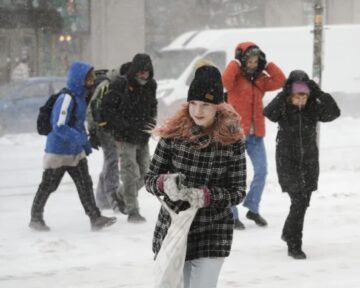
Published by the United Nations Sustainable Development Solutions Network and the Wellbeing Research Centre at Oxford University, the basic message of the report has remained the same since its launch in 2012. The happiest countries in the world are in Scandinavia; this year, Finland is followed by Denmark, Iceland and Sweden. America, despite being one of the richest large countries in the world, persistently underperforms: this year, the United States only comes in 24th out of the 147 countries covered in the report, placing it behind much poorer countries like Lithuania and Costa Rica.
I have to admit that I have been skeptical about this ranking ever since I first came across it. Because I have family in both Sweden and Denmark, I have spent a good amount of time in Scandinavia. And while Scandinavian countries have a lot of great things going for them, they never struck me as pictures of joy. For much of the year, they are cold and dark. Their cultures are extremely reserved and socially disjointed. When you walk around the—admittedly beautiful—centers of Copenhagen or Stockholm, you rarely see anybody smile. Could these really be the happiest places in the whole wide world?
More here.
Enjoying the content on 3QD? Help keep us going by donating now.
Parts of the brain that are needed to remember words identified
From Phys.Org:
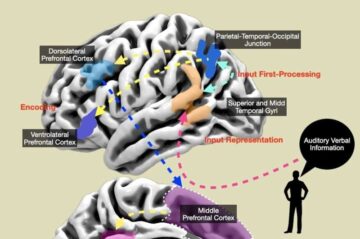 The new study, published in Brain Communications, found that shrinkage in the front and side of the brain (prefrontal, temporal and cingulate cortices, and the hippocampus) was linked to difficulty remembering words. The new discovery highlights how the network that is involved in creating and storing word memories is dispersed throughout the brain.
The new study, published in Brain Communications, found that shrinkage in the front and side of the brain (prefrontal, temporal and cingulate cortices, and the hippocampus) was linked to difficulty remembering words. The new discovery highlights how the network that is involved in creating and storing word memories is dispersed throughout the brain.
This is particularly crucial for helping to understand conditions such as epilepsy, in which patients may have difficulty with remembering words. The researchers hope that their findings will help guide neurosurgical treatment for patients with epilepsy by helping surgeons to avoid parts of the brain important for language and memory, that may otherwise be affected, when doing operations.
More here.
Enjoying the content on 3QD? Help keep us going by donating now.
An Evening with Richard Estes
Enjoying the content on 3QD? Help keep us going by donating now.
Move Over Smart Rings. MIT’s New Fabric Computer Is Stitched Into Your Clothes
Edd Gent in Singularity Hub:
 Wearable devices are popular these days, but they’re largely restricted to watches, rings, and eyewear. Researchers have now developed a thread-based computer that can be stitched into clothes. Being able to sense what our bodies are up is useful in areas like healthcare and sports. And while devices like smartwatches can track metrics like heart rate, body temperature, and movement, humans produce huge amounts of data that devices tethered to specific points of the body largely miss. That’s what prompted MIT engineers to create a fabric computer that can be stitched into regular clothes. The device features sensors, processors, memory, batteries, and both optical and Bluetooth communications, allowing networks of these fibers to provide sophisticated whole-body monitoring.
Wearable devices are popular these days, but they’re largely restricted to watches, rings, and eyewear. Researchers have now developed a thread-based computer that can be stitched into clothes. Being able to sense what our bodies are up is useful in areas like healthcare and sports. And while devices like smartwatches can track metrics like heart rate, body temperature, and movement, humans produce huge amounts of data that devices tethered to specific points of the body largely miss. That’s what prompted MIT engineers to create a fabric computer that can be stitched into regular clothes. The device features sensors, processors, memory, batteries, and both optical and Bluetooth communications, allowing networks of these fibers to provide sophisticated whole-body monitoring.
“Our bodies broadcast gigabytes of data through the skin every second in the form of heat, sound, biochemicals, electrical potentials, and light, all of which carry information about our activities, emotions, and health,” MIT professor Yoel Fink, who led the research, said in a press release. “Wouldn’t it be great if we could teach clothes to capture, analyze, store, and communicate this important information in the form of valuable health and activity insights?” The MIT team has been working on incorporating electronics into fibers for more than a decade, but in a recent paper in Nature they outline a breakthrough that significantly boosts the sophistication of the devices they can build.
More here.
Enjoying the content on 3QD? Help keep us going by donating now.
Thursday Poem
When You Are Old
When you are old and grey and full of sleep,
And nodding by the fire, take down this book,
And slowly read, and dream of the soft look
Your eyes had once, and of their shadows deep;
How many loved your moments of glad grace,
And loved your beauty with love false or true,
But one man loved the pilgrim soul in you,
And loved the sorrows of your changing face;
And bending down beside the glowing bars,
Murmur, a little sadly, how Love fled
And paced upon the mountains overhead
And hid his face amid a crowd of stars.
Enjoying the content on 3QD? Help keep us going by donating now.
Ordinary People: Photorealism and the Work of Art Since 1968
To meticulously reproduce a photograph by hand is to know it most intimately—to pore over its details and devote inordinate amounts of time to re-creating a moment captured in a flash. Such exacting realism commits to the specificity of its subject, elevating its significance in turn. And yet, despite the level of care and determination relating to the practice, Photorealism has largely been looked down upon as cheap illusionism, slick eye candy, or conservative fluff in the art-historical canon of the past half century. Though long associated with crass commercialism and advertising, Photorealism’s easy legibility and apparent superficiality belie more complex depths. Turning purported deficits and liabilities into strengths, curator Anna Katz has staged a thoughtful reappraisal of American Photorealism, both as an historical movement (emerging in the late 1960s and ’70s, when cameras became widely available) and as an ongoing strategy prevalent among contemporary artists.
In “Ordinary People: Photorealism and the Work of Art since 1968,” Katz undertakes a recuperative project, positioning Photorealism in its American flowering as an extension of progressive political impulses.
more here.
Enjoying the content on 3QD? Help keep us going by donating now.
Mycophilia
Michael Autrey at The American Scholar:
 To forage is to look for things that aren’t lost. Birding, mushrooming, hunting agates in the wet sand at ebb tide or arrowheads in the sagebrush along the edge of a dry playa—everything I’ve spent time seeking has been right where it belonged, indifferent to whether it was found. If I failed to see birds when I could hear them or gather mushrooms when I could smell them, I considered it a failure to live in the right relation to my senses. The most apt phrase I know for the necessary state of attunement comes from psychoanalysis. The analyst, in Freud’s idealized therapeutic environment, cultivates “evenly hovering attention”—hard to cultivate, harder to maintain, no matter how early one starts.
To forage is to look for things that aren’t lost. Birding, mushrooming, hunting agates in the wet sand at ebb tide or arrowheads in the sagebrush along the edge of a dry playa—everything I’ve spent time seeking has been right where it belonged, indifferent to whether it was found. If I failed to see birds when I could hear them or gather mushrooms when I could smell them, I considered it a failure to live in the right relation to my senses. The most apt phrase I know for the necessary state of attunement comes from psychoanalysis. The analyst, in Freud’s idealized therapeutic environment, cultivates “evenly hovering attention”—hard to cultivate, harder to maintain, no matter how early one starts.
I was introduced to foraging early, not long after I could walk. My great-aunt Jara would take me by the hand, and as we ambled, she pointed at each mushroom we came across, mixing nicknames and Latin names: Russula, cep, amanita, slippery jack. My mother’s family came to the United States as refugees from what was then Czechoslovakia. As in so much of Eastern Europe, mushrooming is cultural, the people mycophilic.
more here.
Enjoying the content on 3QD? Help keep us going by donating now.
Wednesday, March 19, 2025
Is it “Sex and the City” or “Sex in the City?”
Arlin Cuncic at Verywell Mind:
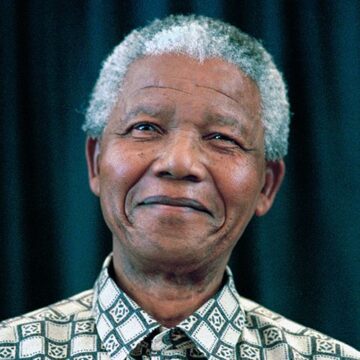 You know that creepy phenomenon where some people remember historic events differently than others? Like when people thought the classic kid’s book was called the “Berenstein Bears” instead of its actual title, the “Berenstain Bears.” Yep, this weird event is called the Mandela Effect.
You know that creepy phenomenon where some people remember historic events differently than others? Like when people thought the classic kid’s book was called the “Berenstein Bears” instead of its actual title, the “Berenstain Bears.” Yep, this weird event is called the Mandela Effect.
Basically, the Mandela effect refers to a situation in which a large mass of people believe an event occurred when it did not. The term originated in 2009 by Fiona Broome, after she discovered that she, along with a number of others, believed that Nelson Mandela had died in the 1980s (when he actually died in 2013).
Where does the Mandela effect come from—and why do these strange perceptions of history keep happening?
More here.
Enjoying the content on 3QD? Help keep us going by donating now.
Zero is helping neuroscientists understand how the brain perceives absences
Benjy Barnett in Aeon:
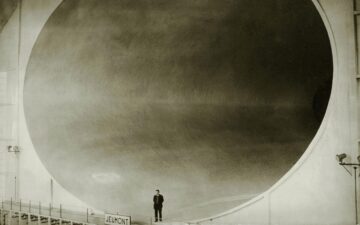 When I’m birdwatching, I have a particular experience all too frequently. Fellow birders will point to the tree canopy and ask if I can see a bird hidden among the leaves. I scan the treetops with binoculars but, to everyone’s annoyance, I see only the absence of a bird.
When I’m birdwatching, I have a particular experience all too frequently. Fellow birders will point to the tree canopy and ask if I can see a bird hidden among the leaves. I scan the treetops with binoculars but, to everyone’s annoyance, I see only the absence of a bird.
Our mental worlds are lively with such experiences of absence, yet it’s a mystery how the mind performs the trick of seeing nothing. How can the brain perceive something when there is no something to perceive?
For a neuroscientist interested in consciousness, this is an alluring question. Studying the neural basis of ‘nothing’ does, however, pose obvious challenges. Fortunately, there are other – more tangible – kinds of absences that help us get a handle on the hazy issue of nothingness in the brain. That’s why I spent much of my PhD studying how we perceive the number zero.
More here.
Enjoying the content on 3QD? Help keep us going by donating now.
When Thoughts Aren’t Private: Will AI Soon Read our Minds?
Enjoying the content on 3QD? Help keep us going by donating now.

 It’s a first date. The drink in your hand is mostly ice. You’ve talked about your jobs, your days, your dogs. The conversation lulls, and you can feel the question coming. “So,” the person across the table asks, “what do you do for fun?”
It’s a first date. The drink in your hand is mostly ice. You’ve talked about your jobs, your days, your dogs. The conversation lulls, and you can feel the question coming. “So,” the person across the table asks, “what do you do for fun?”